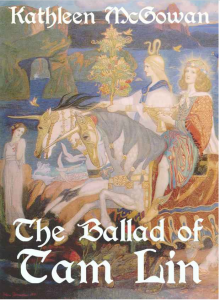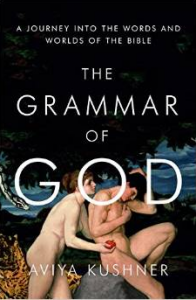 Kathleen McGowan’s “The Ballad of Tam Lin” is a retelling of a classic Scottish fairy tale. Thanks to the author’s diligent research and colorful language, I found “Tam Lin” a fascinating love story set in 14th century Scotland.
Kathleen McGowan’s “The Ballad of Tam Lin” is a retelling of a classic Scottish fairy tale. Thanks to the author’s diligent research and colorful language, I found “Tam Lin” a fascinating love story set in 14th century Scotland.
McGowan is skilled at painting vivid word pictures. Early in the book, for example, she describes a Scottish conquest of an English stronghold with this graphic language: “Upon capturing the castle, Sir James Douglas ordered that each remaining English soldier would lose his head. He then stacked the heads in a grotesque pile in the wine casks in the food cellars, where he poured whiskey on them and set them ablaze.” Ouch! I was immediately drawn into the story with such imagery and wanted to read more.
The essence of Tam Lin is a love story. McGowan describes the heroine Janet as “an action hero – not a damsel in distress waiting for anyone to rescue her.” Janet has a childhood crush on young Scotsman Thomas Gray. At age 11 Thomas ventures out on a hunting expedition with the elder males of his family. Soon Thomas is separated from the hunting party and disappears. In subsequent days no trace of Thomas can be found. He is assumed dead.
Janet does not give up hope, however. Aided by an elderly prophetess named Millie she senses that Thomas is still alive. It turns out he is – he has been rescued by the mysterious Fairy Queen Elphamae. Thomas remains missing to family and friends for years, raised by Elphamae and her elves he is given a new name – Tam Lin. The crux of the story is how Janet wins back Thomas/Tam Lin from his elfin world through a series of adventures and tests.
I liked how McGowan takes this classic Scottish tale and adds her own elements to produce an intriguing story. In a lengthy “author’s notes” and “history” section at the back of the book McGowan explains how she found several versions of the Tam Lin tale. In some Janet and Thomas do not know each other as children, in others they do. McGowan tells us how she includes the childhood interaction between the two to create a better love story later on. The author also adds her own touches, such as the old prophetess Millie (not present in any of the classic tales of the story) to serve as a mentor for the heroine Janet.
The story is rich with metaphorical meanings. We find out that the “evil” Queen Elphamae is not so evil once we learn of her motivations (in an encounter with Janet at the end). And isn’t that the way it is in real life – where we can prematurely demonize people without understanding their histories.
McGowan concludes her book with her own Fairy Encounters – actual experiences she had with the fairy realm in Ireland. Could the mythical tale of Tam Lin point to something real? The reader can decide whether McGowan’s encounters are true. I thought they sounded credible.
If you have read my previous book reviews you’ll notice that this is the first “fiction” book I have reviewed. I’m more of a “non-fiction” guy. But I’m glad I read Tam Lin. It reminded me once again of the value of reading books of different genres. I look forward to the next book McGowan has planned in this series, The North Berwick Witches, in 2013.



